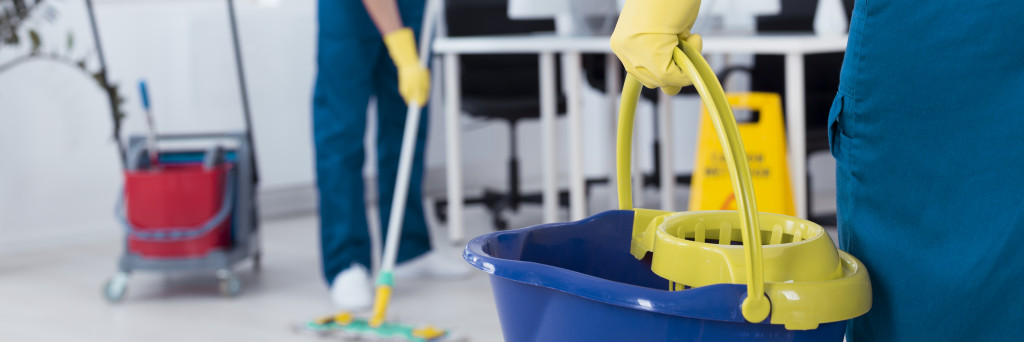When the pandemic started in 2020, it disrupted businesses on a global scale. However, when stay-at-home orders were in effect, the cleaning industry gained public attention. The need for newer, better cleaning technology emerged.
In the race to quickly adapt to the changing building requirements, facility managers had to emphasize the importance of a well-planned and implemented maintenance and cleaning program. Working closely with commercial cleaning providers, they had to scramble to get their own supplies of touch-free restroom accessories, hand sanitizer systems, robotic cleaning equipment, and electrostatic disinfectant sprayers. With limited stocks caused by the strain on supply chains, it became difficult to enforce the use of these devices in the critical areas of a building before re-openings welcomed tenants and workers again.
Meanwhile, custodial and environmental services teams suddenly became essential workers across the country, helping combat the spread of the coronavirus.
These trends helped shape the commercial cleaning business sector for 2020. This year, a new set of trends can help the industry continue to achieve its goals despite the challenges posed by the pandemic. Here are the top trends to watch out for in the last quarter of 2021.
The Re-opening of Businesses Increases Outbreak Risks
Businesses have since re-opened in various stages this year. There was, and still is, a need to manage the risk of having an outbreak caused by an influx of returning building occupants. To achieve that, facility managers had to implement a systematic plan that includes strategic adaptations and conditional steps to accepting people again.
Now that it’s the last quarter of the year, the systematic plan that has been used all year long should be improved based on factors that facility managers and building management ran into during the re-opening months. This plan should be communicated to the building occupants, tenants, and custodial staff at each and every change.
Owners Aim for Sustainability to Encourage Business Growth
Consumers are becoming environment-conscious. They prefer businesses that use environment-friendly supplies and products. Thus, they are always looking for brands that use and apply responsible, ethical, and sustainable products and means. Attaching the words “organic” and “eco-friendly” are no longer effective. Modern customers cannot be fooled.
This trend prompts business owners to aim for sustainability. For the commercial cleaning business industry, this trend should motivate owners to implement environment-friendly practices. It should extend beyond using organic and eco-friendly products. There should be less use of water and energy, for example.

Continued Disruptions in the Supply Chain Distribution
There is still a shortage in the worldwide distribution of hand sanitizers, disinfectants, personal protective equipment (PPE), and other products used for cleaning. The disruption in the supply chain caused by border lockdowns has resulted in the global scarcity of these essential supplies. This shortage affects the commercial cleaning business industry considering they heavily rely on cleaning products and essential supplies to accomplish their jobs.
Distributors are rerouting supplies where they are most needed and diligently portioning them out to ensure all customers are still catered. With a limited supply, cleaning businesses should create a plan that will indicate the number of products and essentials that can only be used for a specific time or day. There should also be alternative options to what they typically use if there is a lack of supply with their regular choice.
The Rise of Ultra-niche Services
The services that commercial cleaning businesses offer can be as wide-ranging or limited in terms of scope. It is, however, beneficial to provide many services to reach a broader customer base.
In light of the pandemic, empty establishments and office spaces are causing a demand for ultra-niche services. The goal is to focus on one or two specific services and offer them to clients. Marble surface cleaning and oriental rug cleaning services are good examples of ultra-niche businesses. To successfully run this type of business requires using the right equipment and proper staff training.
Surface Disinfection Is the New Norm
The Centers for Disease Control and Prevention (CDC) guidelines for cleaning facilities are still in effect to reduce the risk of COVID-19. Proper cleaning and disinfecting strategies are now the new norm.
Although effective against the virus, the downside of surface disinfection is its potential to develop disinfectant-resistant bacteria caused by indiscriminate disinfecting. Training must be given to the staff on how to properly use cleaning products to avoid this.
The high demand for commercial cleaning services means the competition is fierce. This makes it more critical for cleaning businesses to remain competitive. Staying on top of market trends can help achieve this. But aside from that, business owners should first tackle the weaknesses of their companies. Only then can they face the new challenges present today and survive for years to come.
